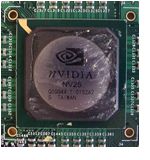'ZDNET Recommends': What exactly does it mean?
ZDNET's recommendations are based on many hours of testing, research, and comparison shopping. We gather data from the best available sources, including vendor and retailer listings as well as other relevant and independent reviews sites. And we pore over customer reviews to find out what matters to real people who already own and use the products and services we’re assessing.
When you click through from our site to a retailer and buy a product or service, we may earn affiliate commissions. This helps support our work, but does not affect what we cover or how, and it does not affect the price you pay. Neither ZDNET nor the author are compensated for these independent reviews. Indeed, we follow strict guidelines that ensure our editorial content is never influenced by advertisers.
ZDNET's editorial team writes on behalf of you, our reader. Our goal is to deliver the most accurate information and the most knowledgeable advice possible in order to help you make smarter buying decisions on tech gear and a wide array of products and services. Our editors thoroughly review and fact-check every article to ensure that our content meets the highest standards. If we have made an error or published misleading information, we will correct or clarify the article. If you see inaccuracies in our content, please report the mistake via this form.
nVidia GeForce4 Ti 4600


nVidia GeForce4 Ti 4600
pros and cons
- The top-performing graphics chip available allows image quality features to be turned on without sacrificing performance.
- Expensive not all of the new chip's features are supported by today's games.
The new flagship graphics processing unit (GPU) from nVidia, the GeForce Ti 4600, is an impressive chip. It has 7 million more transistors than its predecessor the GeForce3, making a total of 63 million transistors. Even modern CPUs such as AMD's Athlon XP, with 37.5 million, and Intel's new Northwood Pentium 4, with 55 million, cannot match the transistor count on this leading-edge GPU. This is especially remarkable when you consider that in these CPUs most of the electronic switches are reserved for the Level 2 cache.
The GeForce4 sets new standards for dynamic memory, too. Up to now, 64MB has been considered the absolute top specification for graphics cards. However, the GeForce4 can handle twice as much RAM. Even some PC users might envy that.
Apart from its higher performance, the GeForce4 delivers enhancements in other areas. The new nView functionality allows the chip to drive two monitors -- something nVidia's competitors Matrox and ATI implemented some time ago (Matrox calls it Dual Head, while ATI calls it Dual Display).
The performance advantage of the GeForce4 Ti 4600 over the GeForce3 Ti 500 is due to several improvements: higher chip and memory speeds; a second vertex shader; Accuview anti-aliasing technology (which saves a program in memory more efficiently than its predecessor); and an enhanced pixel shader that's up to 50 percent faster than the GeForce3's.
Beyond that, nVidia has built a high-quality edge smoothing process called subpixel antialiasing into the GeForce4, which competes with ATI's Smoothvision. Despite all this progress, anisotropic filtering which improves the image quality of foreground-to-background textures, is turned off by default under Direct 3D, although it can be activated for OpenGL games. Only with special driver tools such as NVMax 4.0 or RivaTuner can anisotropic filtering be activated under Direct 3D.
How we tested
To determine the performance of the new Nvidia chip, ZDNet Germany used the following benchmark tests: 3DMark 2001 (DirectX 8), Vulpine GLMark 1.1p (OpenGL), Quake3 (OpenGL) and Aquamark (DirectX 8.1).
Top ZDNET Reviews
The performance of the GeForce4 Ti 4600 was tested in an AMD Athlon XP/2000+ system with an Abit KR7A RAID motherboard featuring VIA's KT266A chipset and 256MB of DDR SDRAM. The rest of the specification was a Promise Fastrak 100, with two IBM DTLA307030 hard disks installed as RAID-0. We used the new nVidia driver version 27.30. All tests were carried out under Windows XP Professional at a resolution of 1, 024 by 768 pixels and 32-bit colour depth.
Results
On 3DMark 2001's synthetic tests, the GeForce4 Ti 4600 shows performance improvements over the GeForce3 ranging between 38 percent (point sprites) and 115 percent (vertex shader).
The superiority of the GeForce4 Ti 4600 is clear when anti-aliasing is activated. In tests with 3DMark 2001, the GeForce4 Ti 4600 with Quincunx antialiasing is 62 percent faster than the GeForce3 Ti 500. Without anti-aliasing, the lead over the GeForce3 is only about 23 percent.
The GeForce4 Ti 4600 also performs well with conventional 3D games. The new chip, without anti-aliasing and vertex shading support, is 44 percent faster than the GeForce3 Ti 500 at the DirectX game Aquanox. The Quake 3 NV15 demo shows that even a higher-powered graphics card does not always offer faster performance. The NV15 demo is so complex that the CPU, not the graphics card, is the bottleneck here.
Modern graphics cards like the GeForce4 Ti 4600 can still be brought to their knees. The widespread belief that 3D games do not overtax graphics boards is not justified unless special architecture features such as pixel shading are built into the 3D game. With conventional techniques like anti-aliasing (AA) or anisotropic filtering (AF), the 3D game does not have to provide special support: these functions can be built into the driver and then applied for each game.
If anisotropic filtering and anti-aliasing are activated, you will quickly notice that even the most modern graphics card can't keep up. Under 3DMark 2001, for both the GeForce3 Ti 500 and GeForce4 Ti 4600, we turned on both 4x AA and the hidden AF option. With this combination, the fill rate of the GeForce4 dropped from 2,183.7 MTexel/s to 689 MTexel/s.
Just as the fill rate drops as AA and AF are activated, so do overall 3DMark 2001 scores. In standard mode (no AA, no AF), the GeForce4 Ti 4600 scores 10,275. This drops progressively as the different image quality features are turned on, to 5,678 points with 4x AA and finally to 3,187 with the highest-quality AA and AF settings. In the configuration with the highest image quality, the GeForce4 Ti 4600 delivers only a third of the performance of the same card without AA and AF turned on.
Conclusion
With the GeForce4 Ti 4600, nVidia has delivered a leading-edge product. The GeForce3's successor is not only up to 115 percent faster in our tests, but it also offers far more functionality. Dual monitor support (nView) is now offered as standard, and there's an improved anti-aliasing function (4x subpixel anti-aliasing).
Many people will be asking: 'Who needs so much performance? Most games don't support this graphics card anyway'. On closer inspection, this argument is flawed. It's true that not all of the features offered by the Geforce4 architecture -- vertex shading, for example -- are supported by today's games. However, additional edge smoothing and texture filtering techniques are available on demand for most games. Certainly, anyone who values good image quality -- which is achieved by activating anti-aliasing and anisotropic filtering -- as well as excellent performance won't do better than the GeForce4. Even so, it could be argued that the Geforce4's performance is at best reasonable and at worst inadequate when the highest image quality settings -- 4xs anti-aliasing and 64tap anisotropic filtering -- are turned on.
Apart from its obvious use as the basis for hard-core gamers' 3D accelerators, the GeForce4 Ti 4600 chip could also be used in OpenGL graphics cards. A few years ago, for high OpenGL performance -- which the GeForce4 delivers -- you would have to pay more than £600. Against that, the price of around £300 for a GeForce4 Ti 4600 card, which should be available from the beginning of March, looks like a good deal.